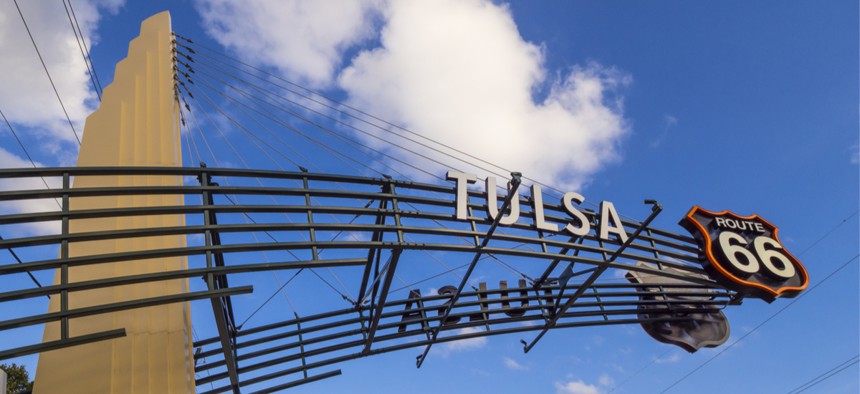Remote Workers Moving to Tulsa? Foundation Doubles Down on Recruitment Efforts

Shutterstock/4kclips

Connecting state and local government leaders
The Remote Tulsa program is now offering $10,000 to 250 people to move to the Oklahoma city for a year, citing success in its first year.
From Vermont to Topeka, Kansas, state and local leaders are offering to pay up to lure new workers to their locales.
Pay-to-move programs have sought to attract new residents to boost the population of rural towns or reinvigorate rapidly aging communities. In many cases, they are seen as an economic development tool, specifically directed at people who have jobs and can work remotely from their new home. But there’s still one unanswered question from all these initiatives: Will new residents stay for the long haul?
Officials overseeing one of the most widely publicized programs in Tulsa, Oklahoma say a focus on encouraging new residents to make connections in the local community helped their incentive program thrive and now they’re doubling down. In its first year, the Remote Tulsa program offered 100 remote workers $10,000 to relocate to Tulsa for at least one year. The program led to at least 17 new residents purchasing homes in the city during that time, a sign of permanency that officials point to as one reason they are expanding the initiative this year to offer the same benefits package to 250 more workers. Anecdotally, others are emphatic about wanting to remain in the community past the one-year time frame required, said Aaron Bolzle, a Tulsa native and executive director of the program.
Unlike other city or state-sponsored programs, often overseen by local chambers of commerce or economic development agencies, the Tulsa program is run entirely by the George Kaiser Family Foundation without use of taxpayer funds.
The program’s success comes from not just the cash payouts, which are made in increments over a worker’s first year in Tulsa, but also through the foundation’s emphasis on community building with the workers selected for the program, Bolzle said. For example, participants in the Tulsa program can make use of free co-working space and are invited to participate in monthly activities with other transplants.
“It’s not that we are just helping you financially and sending you on your way,” Bolzle said. “We work with each individual we bring in to help get them connected to community and to the leaders who are already working on initiatives they really care about.”
Foundation staff meet one-on-one with participants and strive to connect them with other city residents who might share similar interests or backgrounds to help integrate them into the community. In the second year of the program, Bolzle said the foundation also intends to target that outreach to partners or spouses of program participants to make sure they find meaningful connections.
The thinking behind many pay-to-move programs goes that if cities or states want to expand economically they may need to first attract more people. But not everybody always agrees, as programs that use taxpayer dollars to attract new residents have been criticized as inefficient spending.
The Tulsa Remote program, which uses no public dollars, fits into the foundation’s broader goal of making the city a better place for children to grow up, Bolzle said. That includes developing the local talent pool and increasing opportunities for Tulsa natives by attracting investment from new workers and new companies, he said.
“Part of the strategy of making the city the best place for a child’s future is to provide the most vibrant and inclusive community possible,” he said. “By bringing in these really great people, we are expanding the opportunities and connections for the existing population.”
Beyond simply attracting workers, the program hopes to engage new residents in volunteer opportunities, nonprofit organizations, or serving on local boards.
Development has picked up in downtown Tulsa in recent years, and the revitalization, energy and quality of life has made relocation an easy sell for the Remote Tulsa program, Bolzle said. More than 10,000 people applied for the program last year and another 5,000 applications were already received for the second iteration.
The first round of participants proved diverse, ranging in age from recent college graduates on up to workers in their 60s, Bolzle said. Participants moved to Tulsa from 26 different states, with about half of workers coming from Massachusetts, New York, and California.
To make sure workers are a good fit for the program, Tulsa Remote staff interviews applicants and schedules visits to the city for those who have never been to the state.
While there is no set timeline for how long the program will run, Bolzle said he believes the foundation will continue to support some iteration of a talent retention program in the future.
Andrea Noble is a staff correspondent for Route Fifty.

NEXT STORY: The Places Where Growth in Home Values Could Lag in 2020




